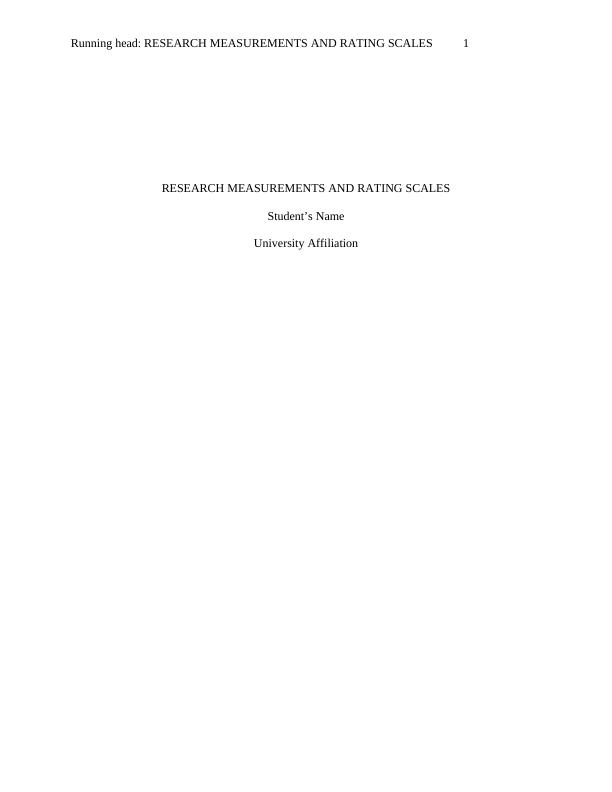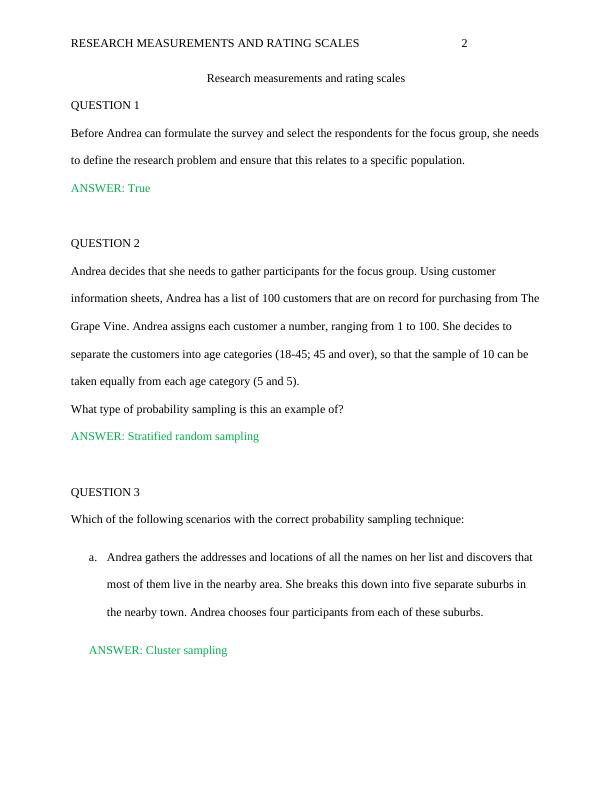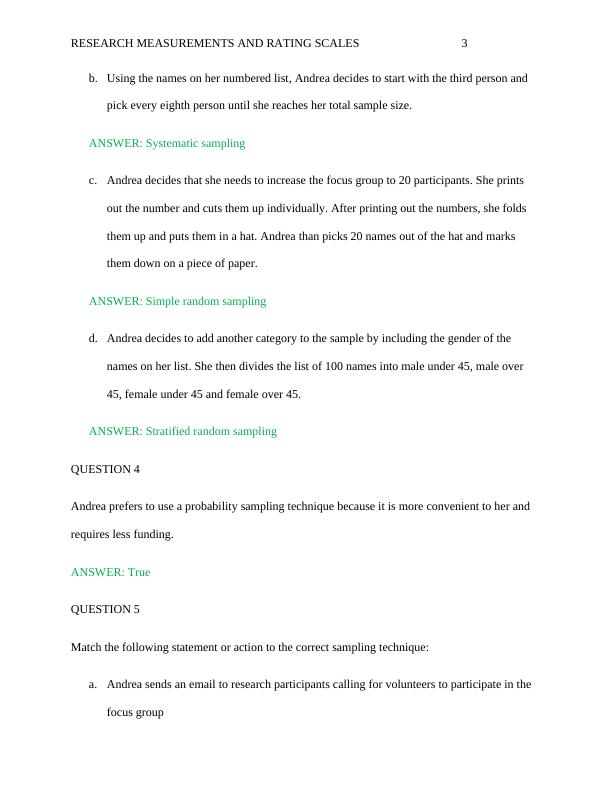Research Measurements and Rating Scales
6 Pages915 Words277 Views
Added on 2023-06-10
About This Document
This article discusses research measurements and rating scales. It covers topics such as probability sampling techniques, including stratified random sampling, cluster sampling, systematic sampling, and simple random sampling. It also explains research rating scales, including semantic differential scale, graphic rating scale, side-by-side matrix, and Likert scale. The article provides examples and references for further reading.
Research Measurements and Rating Scales
Added on 2023-06-10
ShareRelated Documents
End of preview
Want to access all the pages? Upload your documents or become a member.
Sampling in Focus Groups and Interviews
|6
|843
|309
How to Measure Customer Satisfaction - Second Edition
|15
|2635
|410



